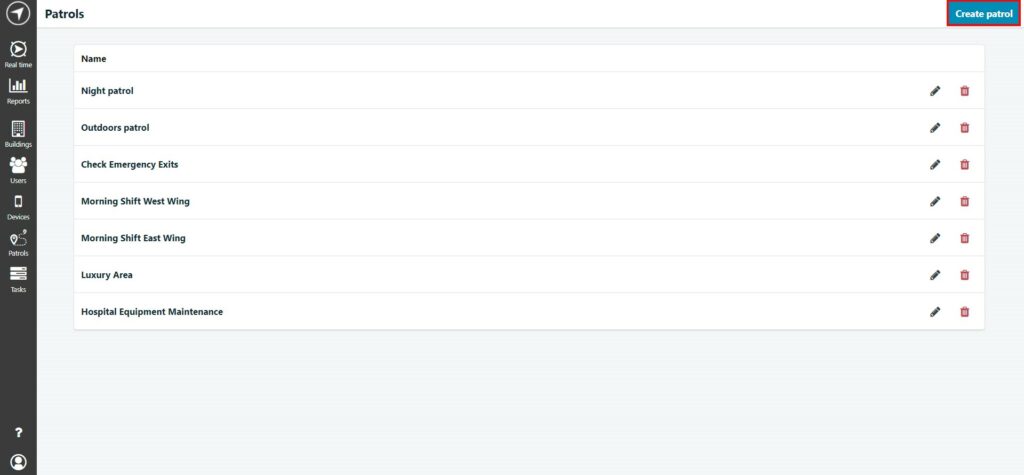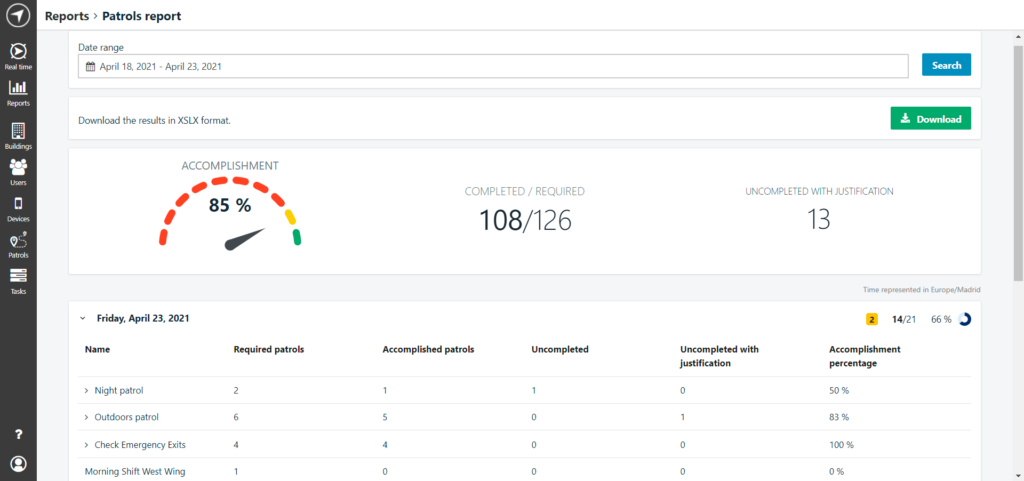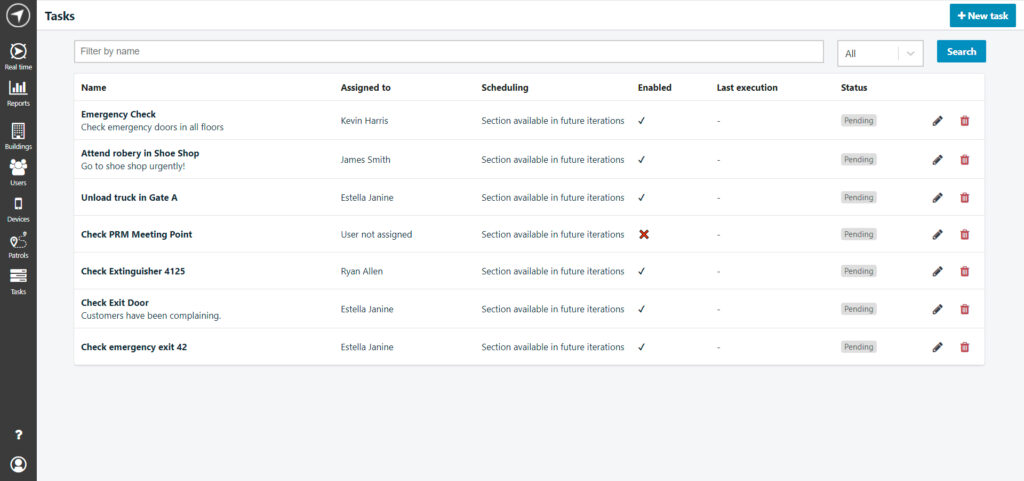Security, cleaning, maintenance… coordinating mobile work crews is tough. And if they operate in large indoor and outdoor spaces, with extensive mobility and a wide range of services to present, ensuring their efficiency, service compliance, and work safety can become an extremely time-consuming task.
At Situm, we have been helping our clients optimize their work processes through indoor and outdoor geolocation for years. Some of the challenges we work to solve are:
- Quick reaction to incidents. Thanks to indoor & outdoor geolocation, we can send the closest security guard to the incident site, or the PMR agent closest to a boarding gate.
- Service audit: Are we providing the required cleanliness in each area, are we distributing our surveillance appropriately? Geopositioned analytics allow us to answer these questions and, of course, attest to the quality of our level of service.
- Ensure the safety of workers and facilities. Through features such as geolocated alarms such as the mobile panic button or fall detection, we can quickly respond to any member of our team or visitor to our building.
Nevertheless, until now, we had not provided a solution to one of the most relevant challenges of mobile team management: the coordination of daily tasks and service KPIs based on their fulfilment.
Geopositioned rounds
A round is nothing more than a set of places a worker must pass through, usually to perform service-related action. To some extent, all mobile work teams make rounds: security guards pass by certain relevant spots to perform visual inspections, cleaning personnel clean the same rooms daily, maintenance personnel periodically check the condition of machinery and infrastructure… On too many occasions, these teams must coordinate using a paper-based system or, in the best of cases, complex spreadsheets. In short, the management and coordination become difficult, tedious, opaque, and prone to mistakes for workers, managers, and customers alike.
At Situm, we believe this does not have to necessarily be the case. That is why we have developed the Geopositioned Rounds feature. Using our Situm Dashboard, we can easily create new geopositioned rounds.

Within each round, we can set parameters such as its name, description, and the number of daily runs required. Of course, we can also identify the individual checkpoints, specifying whether they can meet them (or not) in any order, whether they must stay for a certain time, and even whether they must be present at the checkpoint at a specific time.

The work team receives their rounds through the Situm MRM app and can visualize the degree of compliance achieved within each round. It is important to note that, thanks to the in-phone positioning feature, the Situm MRM app can record that the round has been completed even in areas with no mobile coverage. In addition, as we will see below, the worker can even enter text reports associated with the patrol to report an altercation he has witnessed, record a fire extinguisher that needs to be checked, etc.

Through a rounds report, Situm Dashboard gives us an overview of our team’s performance according to schedule, with the possibility to download a full report in CSV format.

Not only that, but we can also see compliance on a day-by-day, round-by-round, and person-by-person basis. In this sense, Situm MRM provides us with a full range of events associated with each round. These events can be recorded automatically (e.g., date/time at which the worker started the patrol or passed through a checkpoint) or manually by the worker through the mobile app (e.g., description of a circumstance that has prevented him from completing the patrol, or simply a note that he wants to record). And of course, all these records are associated with the worker’s geolocation, to always ensure the safety and reliability of the recorded information.

On the one hand, this feature allows mobile equipment and infrastructure managers to have a clear view of the non-compliance of rounds and their justification or cause. In this way, it will be easy to make service improvements or avoid penalties for non-compliance. On the other hand, it provides a highly effective communication mechanism with which employees can report any relevant circumstances, such as the need for subsequent revision of an emergency door. In this way, we effectively ensure their safety and maximize the return of field information to enrich our decision making.
Geopositioned tasks
Although extremely important, rounds are not the only type of tasks that mobile work crews perform in large spaces. That is why Situm MRM has introduced a new concept: geo-positioned tasks.

Situm Dashboard allows us to set up all kinds of tasks to be performed in our buildings, indicating if any member of our team should perform it, its periodicity (in case it is a recurring task) and, of course, the geolocation of the task (if it should be performed at a specific point). Through the same panel, we can also visualize when the last time was the task was performed and what is its status.
Conclusion
Until now, Situm MRM allowed us to quickly react to any geopositioned incident, optimize and audit our service through powerful geospatial analytics and generally improve the safety of our work teams and facilities. Now, Situm MRM closes the circle of mobile equipment management, allowing us to plan and audit in detail their tasks. In short, helping us to improve our service and the satisfaction of our customers and employees.

